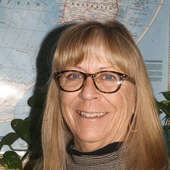- Research tips and McCook Brick Company- solid as a brick (12/16/24)
- Big Give appreciation and some railroad characters (11/15/24)
- George Randel becomes a landowner, gets married, and takes in a Buffalo Bill show (9/20/24)
- The memoirs of George F. Randel, early settler of Red Willow County (9/12/24)
- Vietnam War Memorial honors Nebraskans who served (6/13/24)
- McCook business promotions - just prior to 1893 stock market crash (5/30/24)
- Shall we dance? Meet you at the Gayway (12/8/23)
Hupmobiles and student life in 1921
Friday, December 21, 2018
The 1921 MHS annual contains many advertisements for local business throughout. The first one that caught my eye was for the J.J. Gragg Auto Company which was located on East B Street. Gragg was a distributor for Hupmobile Cars. Now I’ve been to a lot of car museums and shows and I couldn’t remember having seen a Hupmobile, so as you all know, I just had to do some more research!
The Hupmobile was built in Detroit from 1909 through 1939 by the Hupp Motor Car Company. Robert C. Hupp was an engineer who had worked for both Olds and Ford prior to designing his own car. His first car was the Model 20 which he priced at $750, $75 cheaper than Ford’s Model T. Even though Mr. Hupp left the company around 1911, the four-cylinder model sold well. An additional model featuring an eight-cylinder debuted in 1925 and in 1926 a six-cylinder design replaced the four. The company struggled through the depression but continued until 1940 and never reopened its car production after World War II.
Back to the high school year book, the 1920-21 Girl’s Club was an active part of the school. Working towards the “improvement” of the institution, the club instituted the regulation of the middy dress which consisted of a white middy with blue cuffs and collar with a white, black or blue middy skirt. As the write up put it: “Who knows but that in some not far distant day the Girls’ Club will succeed in eliminating other and more objectionable features from high school life other than extreme dress?”
From the article it becomes apparent that the club was involved in many different facets of school since they raised money through a Club Carnival and donated $500 towards the gym fund plus were acknowledged for their work in reorganizing classes and restoring order and discipline after the fire in the high school. (Pictures of the smoke rising out of 2nd story windows and the resulting damage are in this annual also.)
Although the high school boasted a Student Council for several years, 1921 was the beginning of the Student Board unanimously created by a vote of the students to oversee the uniting of funds from the different student activities into one general fund. The board was made up of one student from every activity which contributed to the fund: Mildred Schwab, Bison Newspaper, President; Floyd Traut, Athletic Association, Vice-President; Edna Kent, Faculty Representative, Secretary-Treasurer; Dorris Russell, Girl’s Club; Van Gatewood, Glee Club; Alfred Hegenberger, Debate Club.
The board had complete charge over all money in the Student Fund, handling in 1921 approximately $4000 part of which the students built and paid for the gymnasium on the central school grounds.
To answer a question that has constantly arisen over the J. C. Penny Store locations, listed as an advertiser within this annual, J.C. Penny’s storefront was at 120-122 Main (Norris Ave.) which is where Eakes Office Supply is today. They then moved to the corner of Norris & C Street in the building that H.C. Clapp had built for his store, Clapp moving his business down approximately 4 store fronts to where he was located in the 1960’s. In the 1960’s, J. C. Penny’s moved to the building on the Volentine block of West First and C which now houses Ace Hardware.
The 1921 Annual is available for research at the SWNGS library, 110 West C, Suite M-3. Open library hours are Tuesdays and Thursdays from 1-4 PM, weather permitting.

